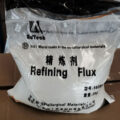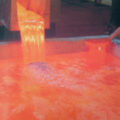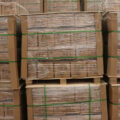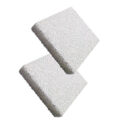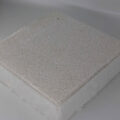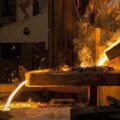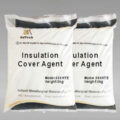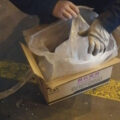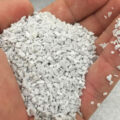Molten metal flux can remove dissolved and suspended impurities, including oxides, nitrides, carbides, and carbonates of molten metals and alloying elements. Dissolved impurities include dissolved gases and dissolved solids. The dissolved gas in molten aluminum includes, for example, hydrogen, and the dissolved solid particles include alkali metal elements such as sodium and calcium. For example, when chlorine is added, it forms impurity chloride salts, which rise to the surface and be removed.
The suspended solids are transported to the melt surface by attaching to the rising bubbles. The hydrogen is removed by desorption into the bubbles. Therefore, it is important to maintain a finely dispersed distribution of the flux gas or flux salt throughout the melt in order to provide many locations to collect and remove dissolved and suspended impurities.

When the refining flux is introduced into the molten metal in the form of a fine dispersion of bubbles, this fine dispersion of bubbles coalesce to form larger bubbles as they migrate to the surface. The coalescence of large bubbles causes a decrease in flux in the upper region of the melt. Based on the same volume of flux gas, a large number of bubbles provide fewer impurity removal positions than a large number of finely dispersed bubbles. For example, as observed from the melt, especially in the upper region, the bubble surface area is much smaller, and hydrogen can be absorbed into the bubble surface, or suspended solids can adhere to the bubble surface to be transported to surface. That is, large bubbles provide fewer places to collect and remove dissolved and suspended impurities. Therefore, it is desirable to redisperse larger bubbles into a bubble dispersion in the upper region.
In order to distribute the molten metal flux, the impeller rotates in the lower area to distribute the flux. When the flux is gas, the gas can be introduced down from the pipe and discharged from the gap of the impeller. When the gas is discharged from the impeller into the melt, it is usually distributed in the lower area in the form of small bubbles through shearing.
In order to distribute the gas to the metal in the lower area, the rotation speed should be high enough to generate a shear force between the impeller and the molten metal to provide fine bubbles of flux gas. When the impeller rotates in the lower area, the flux gas is emitted from there, which depends to a certain extent on the operation of the molten metal flux.

